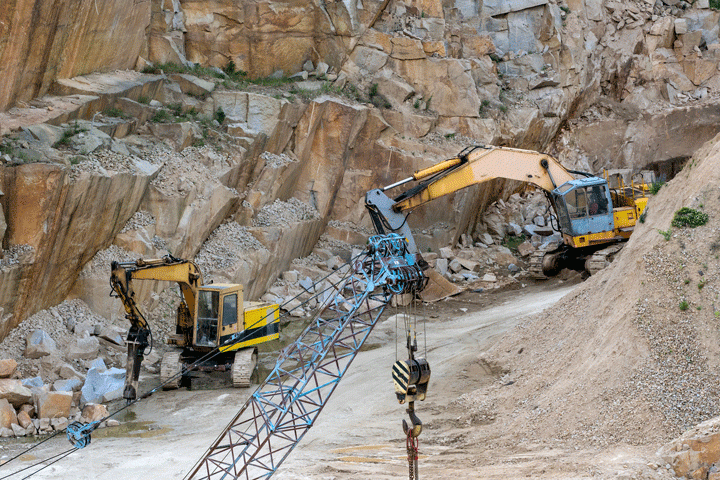Revealing Granite Quarries in South Africa Tradition: A Journey With Quarries
Revealing Granite Quarries in South Africa Tradition: A Journey With Quarries
Blog Article
Unearthing the Rich Background and Lasting Practices of Granite Quarrying
As we stand on the precipice of discovering the intricate tapestry of granite quarrying, a trip via time exposes not simply the physical act of extracting rock yet likewise the social and historic value woven into the really fabric of this method. From the ancient beginnings that laid the structure for modern quarrying methods to the lasting methods that are forming the future of this sector, each carve mark on granite surfaces informs a tale waiting to be unearthed (granite quarries in south africa). The legacy of granite quarrying stretches far beyond plain extraction; it is a testimony to human resourcefulness, durability, and the long-lasting appeal of this stunning stone
Ancient Origins of Granite Quarrying
Going back to ancient civilizations, the method of quarrying granite has actually been an integral part of human history and architectural innovation. The earliest proof of granite quarrying days back to ancient Egypt, where huge pyramids and complex sculptures were crafted from this sturdy rock. The Egyptians made use of primitive tools to extract granite blocks from quarries, showcasing the significance of this material in their monumental buildings.
Moving ahead in history, the Greeks likewise made considerable contributions to the quarrying of granite. The Greeks utilized granite in different architectural marvels, such as holy places and statuaries, showing their ability in shaping and sculpting this sturdy stone. The Romans even more refined the techniques of quarrying granite, employing advanced devices like knives and hammers to remove and form granite for their famous structures.
Through the centuries, the practice of quarrying granite has actually advanced, with contemporary technologies enhancing efficiency while keeping the classic charm of this natural stone - granite quarries in south africa. From old people to modern home builders, the tradition of granite quarrying continues to form our globe
Development of Quarrying Techniques
The development of quarrying techniques has been noted by a continuous development towards higher efficiency and precision in removing granite. Early quarrying techniques included manual labor with fundamental devices such as chisels, hammers, and wedges to draw out granite blocks from the planet.
Innovations in computer-controlled equipment and 3D modeling have actually maximized quarrying procedures, leading to marginal ecological influence and boosted sustainability techniques. As the need for granite proceeds to increase, the development of quarrying methods stays important to meeting market needs efficiently and sustainably.
Cultural Significance of Granite
Granite holds a profound social significance throughout different human beings due to its long-lasting presence in building masterpieces and respected monuments. The social importance of granite expands beyond its physical attributes; it personifies resilience, security, and timelessness, making it a sign of enduring heritages and traditions.

Lasting Practices in Quarrying
In the middle of the rich background of granite quarrying and its cultural significance exists an expanding emphasis on lasting techniques within the market. As environmental recognition and worries regarding source exhaustion have enhanced internationally, the quarrying industry has actually progressively embraced lasting techniques to minimize its effect on the environment and bordering neighborhoods.

Additionally, improvement and rehab of quarry sites post-extraction are essential to sustainable methods. By restoring quarried areas to a natural or useful state, such as producing wildlife habitats or entertainment rooms, quarriers can counter the ecological footprint of their operations and contribute favorably to the neighborhood environment.
Tradition of Granite Quarrying
With a historical backdrop soaked in workmanship and industrial progress, what enduring influence has granite quarrying left on the landscape of modern-day society? The legacy of granite quarrying goes beyond plain extraction practices; it has actually formed architectural wonders, city landscapes, and cultural heritage worldwide. The durable nature of granite has actually made it a favored choice for monoliths, buildings, hop over to these guys and infrastructure, standing as a testimony to the skill and artistry of quarry employees throughout generations.
Furthermore, the economic impact of granite quarrying can not be neglected. The sector remains to provide work opportunities and drive local economic situations in areas where granite extraction is widespread. It has additionally spurred technical improvements in quarrying techniques and tools, resulting in extra effective and lasting methods.
In regards to sustainability, the heritage of granite quarrying includes efforts to minimize environmental impacts with recovery projects and accountable source monitoring. By balancing economic passions with ecological stewardship, the industry strives to make sure that future generations can proceed to take advantage of this enduring natural deposit.
Final Thought

Report this page